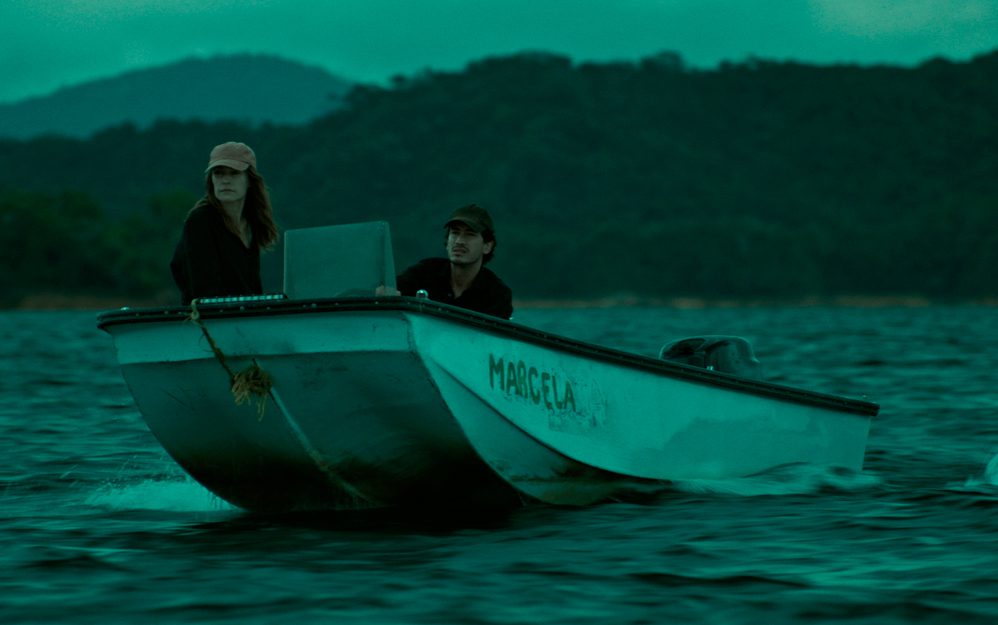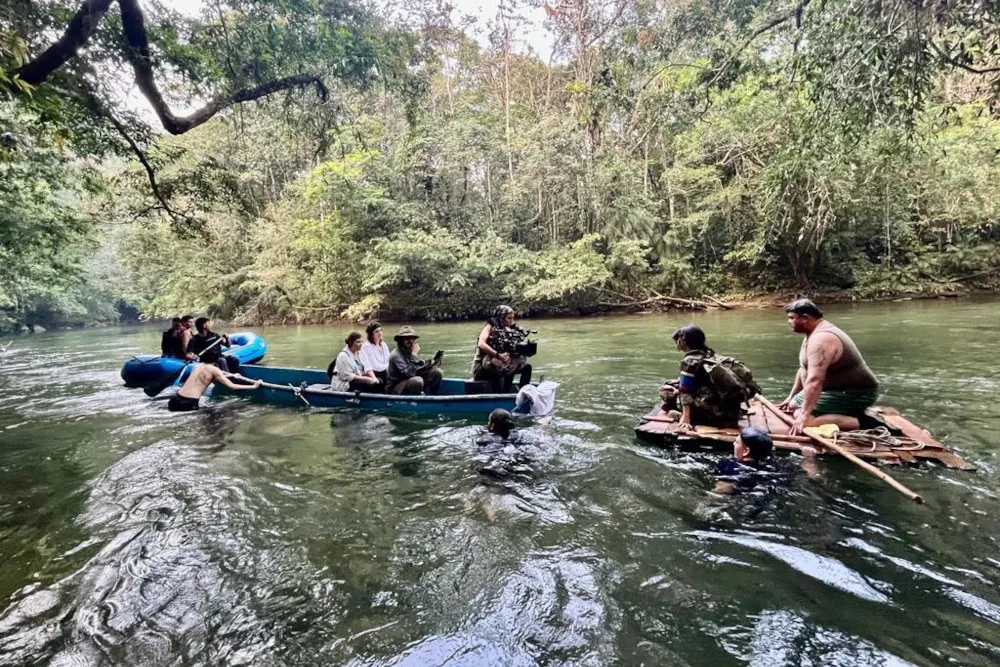Illegal mining is a particularly important issue in public debate in various Latin American countries. This topic is also addressed in the Colombian film Uno, entre el oro y la muerte (Uno Between Gold and Death), the debut feature by director Julio César Gaviria and produced by Clover Studios. It will be released in Colombian theaters this Thursday, the 21st.
The format tells the journey of Esmeralda, a woman who arrives in a town called La Alameda to explore what happened in the last days of the life of her husband, Robert, a deceased Canadian executive who worked for a multinational mining company.
The film was shot over five weeks in Guatapé, a municipality located 82 kilometers from Medellín, which has established itself as a renowned tourist destination thanks to its reservoir and the so-called Piedra del Peñol. Filming was also carried out in the municipality of Marinilla (50 kilometers from Medellín), while Tarazá (a municipality located 222 kilometers from Medellín) was the location where scenes related to the mine depicted in the film were filmed.
A THRILLER WITH A RELEVANT THEME
For Julio César, one of the main challenges was filming at the Guatapé reservoir: “Filming in the water is very complex, even in a dam where there are no waves like in the ocean. The dam is a very open space, so sometimes the winds are very strong and cause the boats to move. We often had to tie them up, which meant doing VFX later in post-production to erase the ties.”
He emphasized that the production addresses a topic with a significant social impact in regions like Colombia: “I really like that the film opens the door to environmental debate. In the process of researching and filming the film, we were able to learn about Colombian mining projects that do things sustainably and responsibly, working with communities. Obviously, there are also people who do things wrong, but this film is an opportunity to begin discussing how we can do things better.”
Likewise, Julio César emphasized that the film explores the thriller genre , which, in his opinion, isn’t widely covered in Colombia. “It’s a cold, uncomfortable story that leaves you reeling,” he said.
For her part, producer Laura Franco noted that 85 people participated in the production, with a crew composed of 70% women. She explained that the film was financed with national investment from the tax benefits of Law 814 of 2003. The sound post-production was handled by Clap Studios .
The cast is led by Colombian actors Marcela Mar and Juan Pablo Urrego, and Canadians Rachel Blanchard and James Gilbert. Franco acknowledged that in order to bring in the foreign actors, they had to negotiate with ACTRA (the Canadian professional performing arts union) and SAG-AFTRA (the American performing arts union), due to the ongoing actors’ strikes in the US at the time.
BENEFITS FOR COMMUNITIES
He also highlighted the economic boost the production provided to the regions where they filmed: “We worked with the locals, traveling in cars and chivas (ladder buses) from Guatapé and El Peñol; we involved the community so they could benefit from everything that happened with the film industry. The entire market was held there for the catering industry , and we created more than 300 indirect jobs.”
Actress Marcela Mar spoke about the work she did to create her character, Esmeralda: “Julio Caesar offered me this role two years before we started filming. So I had the opportunity to have many in-depth readings with him, to discuss scenes, and even to change many things. Julio listens a lot to his team members.”
Juan Pablo Urrego, who plays Joaquín in the film, spoke positively about the experience: “We had action scenes on a boat, the local people treated us incredibly, it was a really cool shoot, and the team put in all their love, effort, work, and commitment. Colombian cinema is at a very high level; we have nothing to envy any other country.”
In his view, the film blends profound themes with an engaging plot: “Uno , it has that suspense we like—action, intrigue. It’s a film that has an important, powerful theme that will encourage debate, but that also entertains us,” he concluded.



